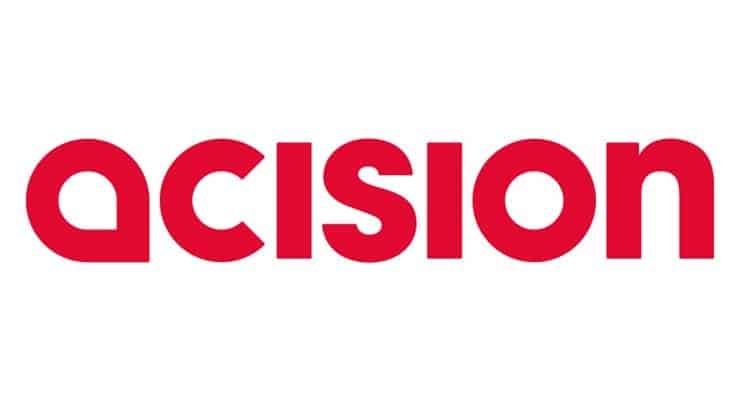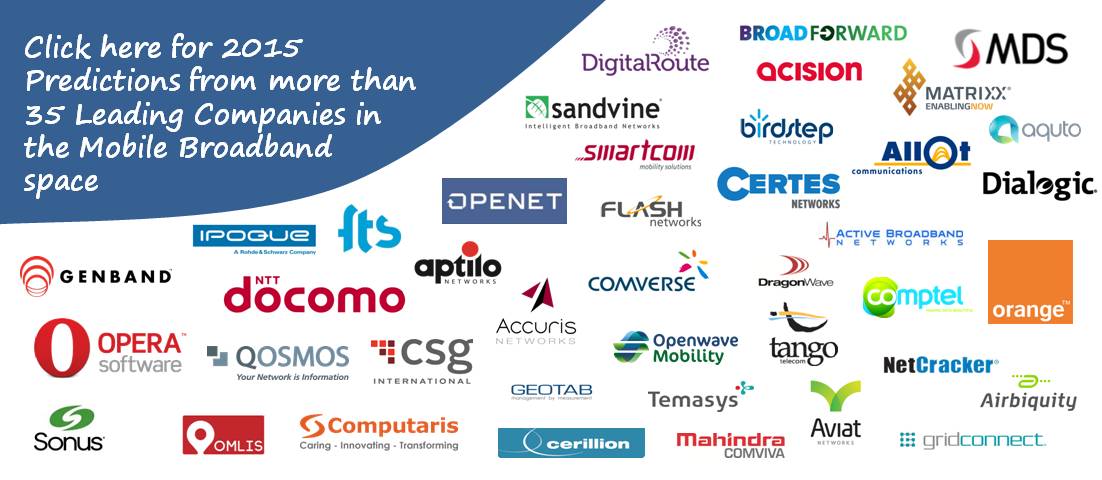By Eric Bilange,
Head of Rich Engagement Services,
Acision.
Low-cost data plans, the increasing penetration of 4G, mobile messaging apps and m-commerce are driving the smartphone market to grow. However mobile technology also expanded beyond these services in 2014 with the launch of new devices, including smartwatches and other connected objects. People are going to continue to expect more from their mobile devices in the coming year and continue demanding a better experience. The mobile market will need to keep providing faster connectivity, building bigger ecosystems and launching new mobile services, particularly for the workplace where there are untapped opportunities for revenue. With the number of global smartphone subscribers expected to reach 3.5 billion by 2019 (according to Forrester), 2015 will not be a year for mobile providers to limit innovation, but to make services bigger, better and more accessible. With that in mind, here are my trend predictions for the mobile industry in 2015:
#1: CONNECTED EVERYTHING - A BRANDED OPPORTUNITY
The Internet of Things is forecast to be a multitrillion dollar market and the next few years are likely to be the most transformative as the adoption of connected objects grows. Everything – from meters and sensors to cars and domestic appliances - is being connected to the internet. As a result, mobile developers will need to adapt; re-programmable SIMs for example will help a range of devices to be connected. In addition, we could start to see the integration of advertising opportunities for brands within these objects. For example, if there was the chance to message your kettle, why couldn’t the screen also display ads for tea brands and other hot drinks?
#2: DATA PRIVACY AND SECURITY
New questions around privacy and data will arise with the developments around the Internet of Things. For example in healthcare there might be opportunities to use data from devices used by the elderly and disabled, so doctors can be alerted in case of emergency. However this means people will have to be prepared to share certain data ‘just in case’.
Consumers are becoming more mindful of their own data privacy and will increasingly demand more secure mobile services in the future. Security has been brought to the forefront of mobile since the “Snappening”, where hundreds of pictures were exposed from Snapchat in September this year, and November 2014 when WhatsApp added end-to-end encryption services. There will be more eyes on developers working on these services to improve T&Cs, and enterprises need to be prepared for the scrutiny that comes from having access to more real-time data. Users should be in full control of their own private data and apps should present simple and clear opt-in/opt-out options, something which has surprisingly still not been addressed sufficiently.
Eric Bilange,
Head of Rich Engagement Services,
Acision

#3: DESKS GO MOBILE
There has been a general increase in remote working all over the world. However, are mobile devices today set up properly for mobile working, to the extent that your phone could replace your desk? The rise of OTTs has made instantaneous communication easy and now widely accepted and expected whereas email is slow by comparison. The adoption of more sophisticated messaging tools will start to rise next year, giving employees access to lots of communications services within one or an array of interworking apps. Companies based around the world will be able to bring their field workers together through these services.
This ability to ‘work mobile’ will be echoed in customer communications too. The future of customer service is using rich engagement for brand interactions and to have queries and problems dealt with in real-time. From a video consultation with a customer service representative through WebRTC, to paying for a purchase by instant message, in 2015 mobile services will be based more around richer communications resulting in better, fasterand more personal customer service experiences.
#4: LOCK-DOWN ON ROAMING
What is the value of the lost branding opportunity for operators when users switch to using a different network when abroad? As an operator, there is clear benefit if a customer still accesses your app and views your content wherever they are. There will be more competition to keep brand opportunities over the coming year and this will mean the introduction of new and cheaper roaming services.
#5: MOBILE TO EMULATE ENTERTAINMENT
In the entertainment sector, on-demand has caused disruption on an unprecedented scale, affecting the way content is created and consumed. Cloud and virtualisation continue to change the communication services landscape as people turn to digital services. The combination of LTE-Broadcast service delivery over a good coverage spectrum could be revolutionary.
#6: 5G CONNECTIVITY
Ten thousand times more traffic will need to be carried through mobile broadband technologies beyond 2020. We’ll see the evolution of existing systems like LTE-Advanced and Wi-Fi move to 5G services, so that providers can fulfil faster broadband policies. These services will be enhanced by key performance requirements such as virtually zero latency to support Tactile Internet, M2M control, and augmented reality.
Overall, 2015 will be about companies recognising the demand by users for continually better, faster and more innovative mobile services. Apps are just one area where this will be apparent. The development of browsing experiences within apps means users don’t have to leave the service they are using. Unique ‘in-app’ services are likely to increase in popularity and set services apart from the competition because they allow users to have a smoother and faster experience. It’s this constant demand for a better user experience that will keep the mobile industry on its toes throughout next year.
About The Author:
As the Head of Rich Engagement Services at Acision, Eric drives the business unit strategy and business development activities focussed on creating solutions which enable operators, enterprises, and developers to offer innovative, rich, secure, and reliable customer engagement services to the markets they serve. Eric has an exemplary history of over 20 years’ experience in management roles within the online, mobile services and technology industry. For seven years, he held various roles at IT services and consulting company, Capgemini, before leading the Professional Services team at Netscape Communications in Southern Europe. Eric was Senior Director, Engineering, at Qualcomm where he was responsible for innovation at Qualcomm Labs and prior to that, was CTO, executive VP and co-founder of MFORMA/Handson, an entertainment, gaming wireless application publisher.


















